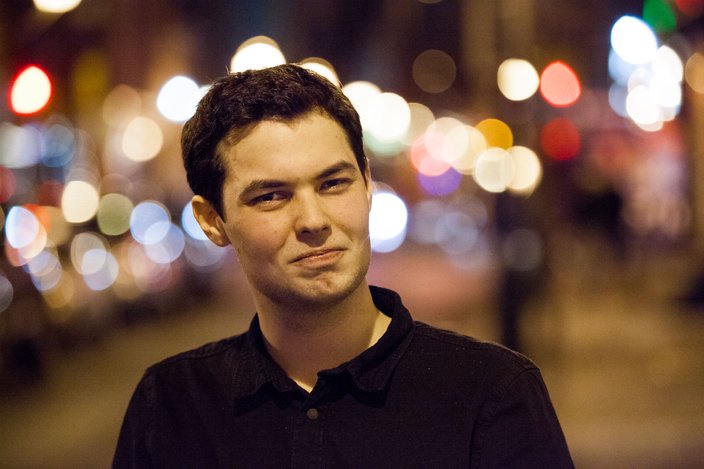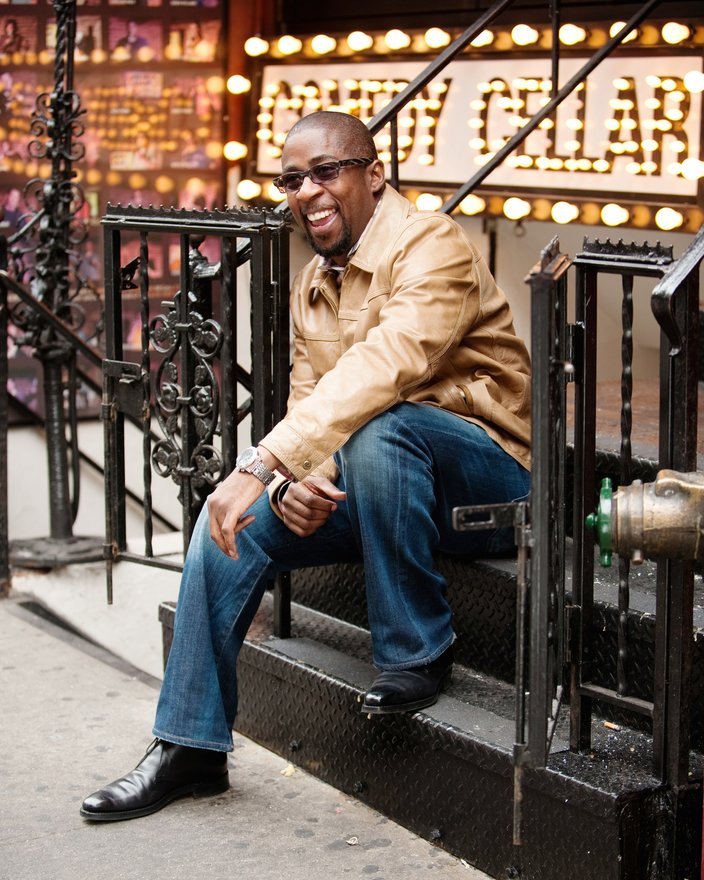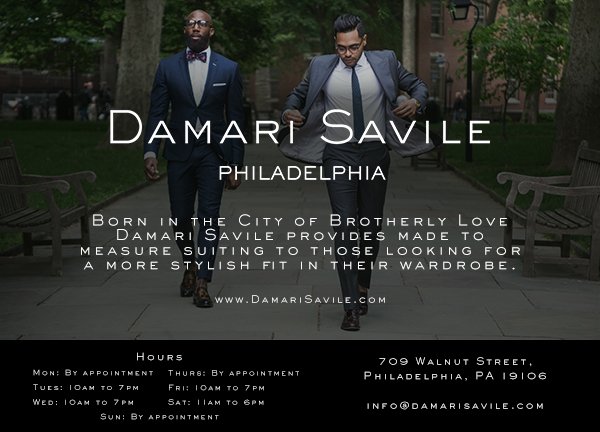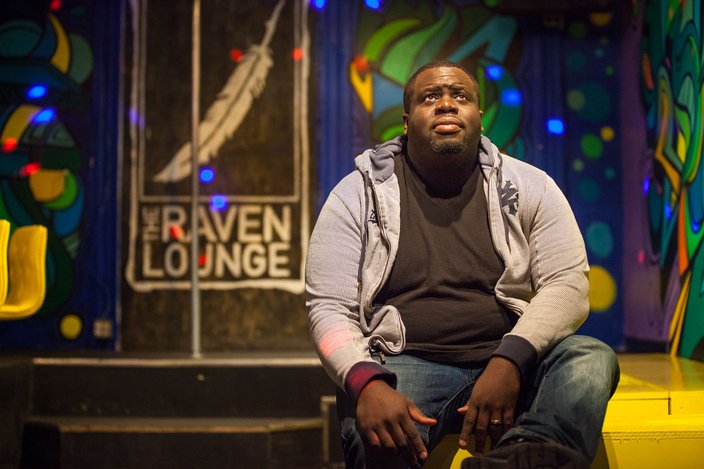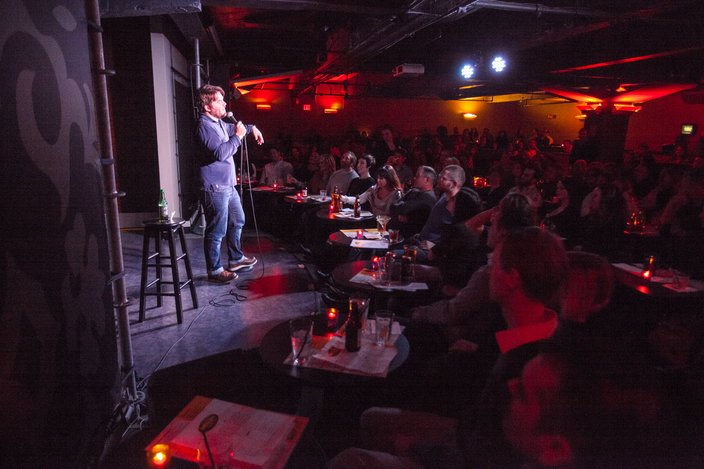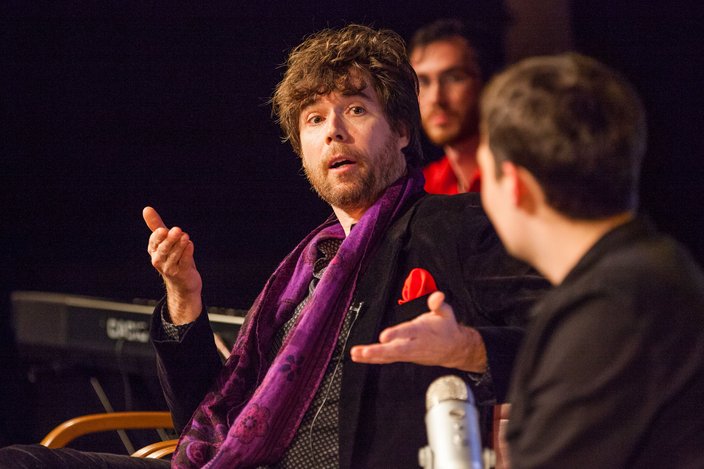
January 08, 2015
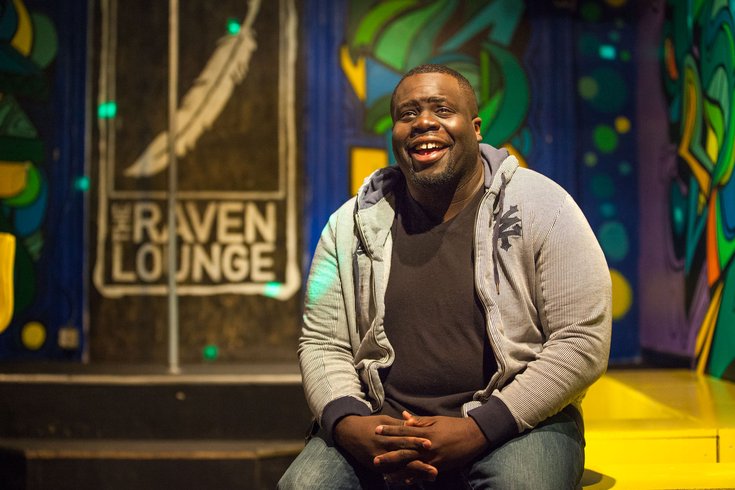 Thom Carroll/PhillyVoice
Thom Carroll/PhillyVoice
Chris Cotton in the freshly painted 2nd floor of the Raven Lounge on Sansom Street In Philadelphia.
Comedy is a game of psychological domination over an expectant crowd, and the outcome – the laugh – is always uncertain. The way a comedian delivers his or her jokes depends on who’s listening. But that’s a shifting target, particularly in Philly, where audiences have been historically divided along racial and creative lines.
With only one or two major clubs in a no-nonsense town so close to New York, Philly stand-up comics create the change they want to see. They define their work, and the crowds they perform for, within and across the dividing lines of the club status quo. Comics are limited by opportunity yet emboldened by the freedom that comes with not having a legacy to follow. That’s what makes Philly comedy so rich: creativity under duress, emerging in the void left by the last generation nearly a decade.
In the past two years, that creativity has taken the form of improvised talk shows, one sign of the recent uptick in independent comedy in Philly.
“Basically, it ends up feeling like a conversation between a room full of strangers,” Aaron Nevins said, describing what goes on at his monthly interactive comedy showcase, 'Hang On with Aaron Nevins.'
While a stand-up comic like Nevins typically prefers
taking a lone-wolf approach to his art, this audience is welcome to engage directly with him. It’s what makes the show special. Going off the grid to
reach a new kind of crowd, and produce a show that breaks creative ground, is
nothing new in this city. But it wasn’t always so easy.
“It’s easy when I was growin’ up, coming through, to hate a lot of things,” comic Keith Robinson told PhillyVoice.com. “You look at white people wrong, you look at — really, my neighborhood, South Philly, was really racially divided.”
The Southwest Philly native, a frequent emcee at the Comedy Cellar in New York, knows what it means to grow up hard. He came up during the ‘80s comedy boom, when audience members could be openly racist, and comics, like the clubs that employed them, were a dime a dozen. You made the conversation go your way. And then you got out.
Robinson believes it’s not the city that makes you a better comic; it’s leaving the city that does.
“When [you're] around a bunch of monsters, you gonna get better,” Robinson said, referring to Jim Norton and Bill Burr and the late Patrice O’Neal. They were the heavy hitters of New York comedy when he moved there.
Before you can move on, you have to get your legs under you. The first step is to put one foot in front of the other. Literally.
In the beginning, the Southwest Philly-born Robinson recalls, “I didn’t know where comedy was, where to find comedy.”
Flat broke, he walked all the way from 32nd and Dickinson to the Comedy Factory Outlet at 3rd and Bank streets. The minute he hit the stage was the minute he knew exactly what he wanted to do with his life.
But his revelation was eclipsed by the snarl of prejudice that threatened to knock him off his perch. One day, he was told point-blank that he was scaring the crowd: A hat embellished with the letter 'S' for “Supreme Gangsta” was rubbing white patrons the wrong way. He was told to come back wearing penny loafers instead. Back in Southwest Philly, friends made fun of him, and he questioned whether he had lost a part of his identity.
Rather than cower or conform, Robinson had to learn how to defend himself. An 1990 Inquirer article captures his reaction to a heckler lobbing a racist slur at the comedian, who almost lazily calls out the “Neo-Nazi in the front row.” That the crowd laughs highlights his win in the game of rational victory, the ticket to a better life.
By the time of the heckler incident, the comedian had already rallied his troops to form the Comedy Express, an all-black group of comedians. They were successful, even landing sponsored tours. But to Robinson, rising to the top in his hometown meant he was ready to move on. In 1992, he moved with comedian Wanda Sykes to centrally located Woodbridge, New Jersey, and began commuting to New York every day. He goes back periodically to scout for talent and bring aspiring comics to the City of Lights, where they can make something of themselves.
“I feel like Lou Gossett in ‘An Officer and a Gentleman,’” he says, “when you see the new recruits come in and I’m saying my same speech: ‘There’s only two things that come [out of] Oklahoma, steers and q*****. Which one are you, boy?’”
Even when his spiel falls on deaf ears, the memory of a Philly comic who made it resonates quietly among those who stay.
“Keith is like the Harriet Tubman of the Philly comic railroad,” Kurt Metzger, a white stand-up comic based in New York, told PhillyVoice.com. He’s the product of the mid- to late-‘90s Philadelphia comedy circuit. Kevin Hart, the Hollywood golden boy of Philly urban stand-up, listened and got out early. In Metzger’s case, the selling point didn’t work immediately.
By the time Metzger was coming up, the landscape of Philly comedy had changed substantially. In the late-‘90s, a black comedy circuit had taken root. Russell Simmons’ Def Comedy Jam, which originally aired on HBO between 1992 and 1997, helped popularize an obscenity-laced strain of comedy tailored to a hip-hop audience whose tastes merged with those of Def Jam Records, Simmons’ music label. The Laff House, the now-shuttered club drawing primarily black audiences, was the only major comedy venue in the city.
Performing there
was baptism by fire.
“That was probably the best thing [living in Philly] could’ve done, was go to the Laff House,” Metzger said. “You know, I would be doing some weird, avant-garde French clown s*** if I didn’t go do that.”
On Thursdays, the club hosted an open mic called Blazin’ Thursday, where you could win money, he said. Kevin Hart usually won.
Performing at the urban spot was formative for a new comic. All-Muslim security and a lively mix of “hilarious maniacs” gave the venue a distinct dimension. Then, he was new and terrified. But it wasn’t as rough as it seemed to him at the time. Now, he’s strong enough to handle an initially hostile crowd without abandoning his point of view. In fact, that training is what made his comedy as distinctly unapologetic as it is.
A kind of intellectual lethargy can overtake a room that slants too narrowly toward one culture. It’s not all clubs; it has more to do with location.
“I didn’t enjoy doing Madison, Wisconsin, because it was way too f***ing white,” Metzger said of a recent tour.
He describes a group of guys leaving sour-faced before the show was over.
Going to the Laff House, where the unfamiliar reigned, came down to the decision to tell jokes at a club that drew a regular crowd versus a crowd filled with other comics. The only other club in the area was the predominantly white Comedy Cabaret in South Jersey. Doing comedy there just felt like hanging out with his friends. It also earned him a hard-won advantage: Performing for a crowd to whom he was a visible outsider, he learned to quit catering to the audience’s expectations. That attitude has brought him success with the Philly crowds of today and is also what makes him directly fail elsewhere, he says.
“This is not a race statement, but it does have a lot to do with it,” Cotton told PhillyVoice.com. “Basically none of the black comics or newer comics knew about this club. And it was the kind of thing where, we’re all working here, we don’t want you to come ‘cause we don’t want anybody else taking the spots.”
“There’s a certain amount of offensiveness that I don’t know why it works really well in Philly, but don’t work in a place like [Madison],” Metzger said, “and I can only attribute it to lack of black people. Not myself.”
Today, Metzger comes back to Philly to headline at Helium Comedy Club, which opened in 2005. Helium saw the cultural tide shift back toward a “mainstream” club structure. In 2013, the Laff House closed its doors, according to a radio segment produced by DaLaughingBarrel.com with old-school Philly comic, Turae, due to failure to pay rent after the passing of Ms. Mona, who owned the club with her husband. For Metzger, though, the cycle has come elegantly full circle. “I feel like I put in my old Laff House time so I could do Helium now,” he said.
While the Laff House tore up and pushed out a comic good enough for the newest room for touring comics, it was harder to break into for those still living in Philly. Helium existed for two years before Chris Cotton, a young, up-and-coming black standup, had even heard of it.
“This is not a race statement, but it does have a lot to do with it,” Cotton told PhillyVoice.com. “Basically none of the black comics or newer comics knew about this club. And it was the kind of thing where, we’re all working here, we don’t want you to come ‘cause we don’t want anybody else taking the spots.”
The contrast between the offerings at each venue was stark. To Cotton, who now splits his time between Brooklyn and his hometown, the South Street club was like a second home. Even while the club was going under, they’d feed Cotton while his mother, who passed two years ago, was getting sicker with MS.
Helium provided work and put a national spotlight on those who made the managers’ cut. Cotton discovered the club through a fellow open micer at the Laff House. It was known for drawing an audience, and, at least theoretically, could lead to spots featuring or opening for headlining comics. On the advice of Conrad Roth, a white standup comic, Cotton signed up for Helium’s mic, but he didn’t feel welcomed there.
Cotton devised a plan along with Roth to create an open mic that would even the playing field. He set out to produce a racially mixed room that could be “all things for all comics.”
Naturally, as a testing ground for new material, it didn’t pay anything, but what it lacked in commercial infrastructure it made up for in diversity of perspective. In 2007, Cotton, Roth and fellow Philly comic H. Foley started hosting the mic upstairs at the Raven Lounge on Thursday nights under the banner of Center City Comedy. Today, a new group of comics run the show. According to their vision, Raven Lounge attracted a racially mixed lineup playing to a mixed audience.
“That’s the craziness about that room,” Cotton said. “If you were an alternative guy, that could become an alternative room for you. If you were a mainstream club guy, it could become a mainstream room. Whatever you came to do, that room, for some reason, would morph into that for you.”
Like Robinson, who joined forces with other comics to interject a black presence into a white mainstream, Cotton created an event for anyone wanting out from their designated headquarters. The Raven Lounge night provided an alternative to either the Laff House or Helium. As deliberate as its formation had been, its success was organic, an outgrowth of necessity and pure excitement. Since the need for an exclusively black club had been satisfied, and its monopoly dissolved, the cultural middle ground had become the next frontier.
Where the audiences were “the same” for every comic on the lineup, no comic could have home advantage with a familiar crowd. This was the perfect test of a joke’s power to resonate. It was a petri dish for hybrid performances.
At a screening for his recently debuted movie The Wedding Ringer at the Riverview Theater on Columbus Boulevard, Kevin Hart reflects on the value of diversifying your audience in Philly. It takes hustle. But not only is it possible, it’s essential. Conquering the divide between the crowds by refusing to pick a side puts you in the position to do more on a bigger scale.
“I think there’s only a segregation if you allow it to be,” Hart told PhillyVoice.com.
“If you want to stick to one side you can, but for me and my craft, I wanna make everybody laugh. So I spent just as much time in the urban field as I did in, quote unquote, the mainstream field. That’s how you get your balance, that’s how you learn to appeal to everyone onstage. And that was my goal, that was my task, and once achieved, it just puts you in the position for longevity.”
Kevin Hart takes in the spotlight at the premiere of The Wedding Ringer on Jan. 6 in Los Angeles. / Eric Charbonneau, AP Images
As the performer who fills up the nearly 20,000 seats at Wells Fargo Center should know, attendance measures a comic’s power to resonate. True to that metric, the Raven Lounge mic was always packed. A row of local comics, and sometimes feature or headlining comics bored after their show at nearby Helium, hung in the back. The place had buzz.
Through the small, dark box-like room ran a live-wire energy that didn’t fade until close to 1 a.m. And what you saw could change on a whim. The primarily standup-friendly show could veer toward Cotton’s self-admitted “rants,” bizarre one-liners and formless testing-of-the-waters that as Cotton describes it, he designed a kind of plastic playground that transformed according to the wishes of whoever stepped inside. It’s a function of the crowd, whose disparate energies mixed with the comedians’ to forgive missteps and encourage uninhibited experimentation.
“That’s the craziness about that room,” Cotton said. “If you were an alternative guy, that could become an alternative room for you. If you were a mainstream club guy, it could become a mainstream room. Whatever you came to do, that room, for some reason, would morph into that for you.”
Rooms like the Raven that permit freeform weirdness, according to Philly-based standup comic John McKeever, can funnel creativity back into the mainstream. They produce stronger comics for the Helium’s of the world, where a more formulaic joke structure is truly the ticket.
“Alt material, you know, with wandering premises and essentially no punch line will do well because people like the idea,” he told PhillyVoice.com. “Whereas [at Helium], they’re like, get to the joke. Get to the meat and potatoes, so to speak.”
Sitting in the green room of Helium Comedy Club where he’s featuring for Australian comic Wil Anderson, McKeever added: “I think those rooms build better comics for these rooms.”
He uses Philly audiences to test new material. At Helium, the average $25 ticket price puts a higher stake on the performance. Because they’re more demanding, the crowds can tell you whether your jokes have staying power. Fixated, they’re not afraid to display a range of emotions as they come up in the moment.
“If you go to a place like Portland, where they’re nice about every joke you tell and they don’t have any harsh feelings or any happy feelings, it’s hard to tell what bits are working,” McKeever said.
That emotional transparency can be carefully cultivated in alternative settings like the Raven Lounge or Hang On with Aaron Nevins. It needs to be monitored and reduced to specific strains in order to look for new comedic mutations. To those who govern the business of funny as a serious investigation into truth, art and human interconnectivity, a kind of irreverent science, Nevins represents a new wave of experimentation.
Said McKeever: “He’s seen past the typical bullsh*t of like, I’m running a show, I’m gonna have five standups on and that’s it. He’s introduced the thematic show more than anyone else has. He’s approaching it in like a really interesting way.”
Not only is Nevins giving comics a chance to pursue an errant strain of comedy, i.e., to fail, on purpose, he’s also deliberately cross-contaminating with the audience. In a respectful way, he employs the most obvious prop in the room to do his bidding, returning his shots and offering non sequiturs made all the more funny for how they skirt a given show’s theme. Like a baseball pitching machine, they keep tossing new material for him to hit out.
“I think Philly gets a reputation for having difficult crowds, but at Hang On especially, we’ve never experienced that,” the show’s host said.
On this night at the Adrienne Theater, just across from Helium, Nevins is interviewing Jon Wurster, half of the legendary comedy duo Scharpling and Wurster of the Best Show (previously on WFMU) fame. Old-school Philly band names from the ‘80s like Pyschotic Norman and Autistic Behavior get bandied about, while the audience ad-libs at will. In a break from battery-throwing tradition, they seem engaged and hungry for their hosts’ measured acceptance.
The show can switch tracks entirely depending on the input from the attendees, mostly misfits, including an occasional heckler who, rather than being silenced, rises to the rank of local celebrity. A guy who’d lugged in a wheeled cart of beer yells YEEEAAAHHHH at random from a dark corner of the room. He appears to be a returning feature.
Nevins embraces the chaos.
“Essentially, we’re welcoming people to heckle us and giving them the power to talk at any time,” Nevins said. “And somehow, miraculously, everybody’s totally cool.”
There’s a kind of On the Road breathlessness throughout the show that cheerleads everyone involved, waiting wide-eyed for the next gag to come. But the uncertainty the show is premised on is fundamentally exciting, like an inward-facing grin, a constant egging on. You never know who’s going to say something next.
At one point, Wurster starts telling a story about Fishtown when Dan Vetrano, Nevins’ co-host, spots an audience member who is about to say something. Wurster asks if he can just tell the story real quick. Vetrano doesn’t hear him, and prods his impromptu comedy partner to go on. Wurster tries again. He fails.
Would the comics’ dedication to the show’s freeform structure overtake the one voice that’s supposed to anchor it? Nevins drops his host façade to get Vetrano’s attention: “Dan, find out where he lives.” A story finally surfaces. It’s about a kid vomiting through a recorder.
Bucking the system has its blind spots, but the alternative is unequivocally darker. The gap between alternative and mainstream comedy in Philadelphia echoes old dividing lines. Considering the earnest desire to innovate on both sides, it’s a little discouraging.
“I know guys from both sides that won’t cross,” McKeever said. “And it’s because they feel intimidated by either side.”
While crowds and content vary, fear always stays the same. A narrow view of the world freezes the pursuit of new ideas and cuts off entry to braver, more interesting universes of thought. So keep your eyes peeled and your mouth smart. ‘Cause you never know who’s going to find the next frontier.
